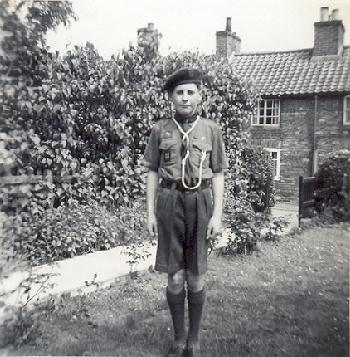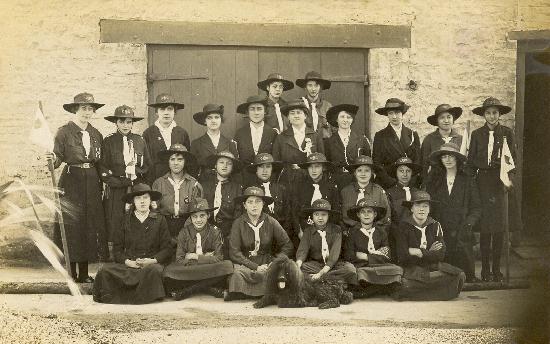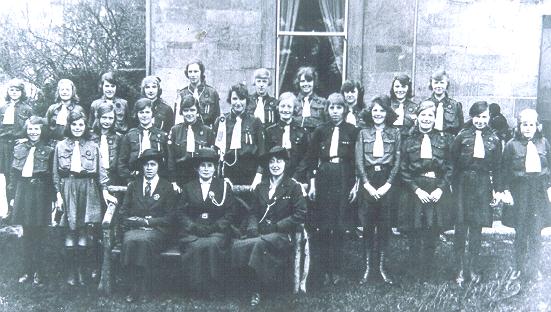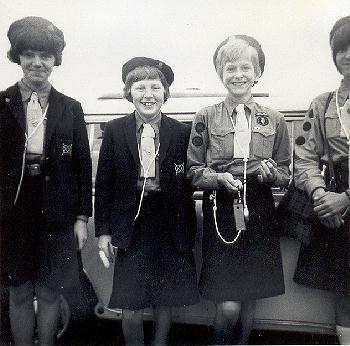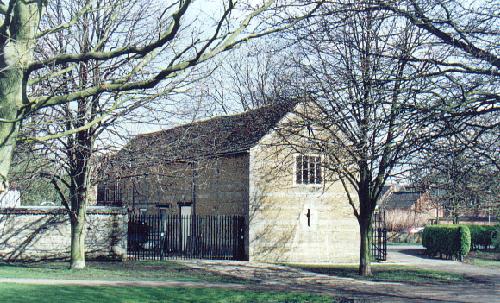The Scout Association is an international your movement founded in England in 1908 by Robert Lord Baden-Powell (1857-1941). While serving in the army, he had written a book about the scouting techniques he had developed, especially patrolling in small units for reconnaissance purposes. He later learned that the book was being used for training boys and on the basis of the interest shown in its ideas, he organised an experimental camp for about 20 boys on Brownsea Island in Poole harbour, Dorset, in 1907. He then wrote a proposal for a national movement for scouts and published Scouting for Boys in 1908. The purpose of the Scouting Association is to train boys to use their initiative, to teach them practical skills and to help them become useful members of society. Open to all, both able-bodied and handicapped, it is a voluntary non-political organisation based on moral principles such as loyalty, especially to one's country and religion, active participation in society and responsibility for self-development. Scout groups, of which there are nearly 12,000 in the United Kingdom, consist of Cubs (8-11 years), Scouts (11-16 years) and Venture Scouts (open to young men and women of 16-20 years). Activities include sport, bands, camping, community service and fund-raising. Progress is marked by awards, the highest being the Queen's Scout Award.
By 2005, the world movement comprised more than 28 million scouts in some 216 countries and a World Jamboree is held every four years. It is also estimated that some 300 million people have belonged to the scouts for a time during their lives. Bourne has always had an active scouting association and interest reached its peak during the middle years of the 20th century. In 1965, the 2nd Bourne Scout Group attracted many youngsters with 28 cubs led by Mrs M Bloodworth, Mr Rushworth and Miss J Ayliffe, and two patrols of seven boys each led by Mr J Collins and Mr F J Hunt. Meetings were held at the Old Grammar School in the churchyard with outdoor meetings during the summer months when a camp was held in Devon during the first week in August while fund raising events during the year included jumble sales, cake stalls and Bob-a-Job week, now known as Scout Job Week. In 1977, the venue for meetings moved to the Shippon Barn in the Wellhead Gardens which continues as the headquarters for both scouts and guides to this day.
The girl guides Girl Guides were the female members of the scouting for boys organisation founded in Britain in 1910 by Robert Baden-Powell and his sister Agnes and continues to this day. There are three branches: Rainbow (age 5-7 years), Brownie Guides (age 7-10) and guides (age 10-15). The World Association of Girl Guides, and Girl Scouts as they are known in the United States, has more than 6.5 million members.
A company existed in Bourne from the earliest days although there are few surviving records except from the photograph above taken in 1919 and occasional news reports of their activities. The Stamford Mercury, for instance, carried an account on Friday 17th December 1920 of a presentation to a former officer: On Saturday afternoon, the Bourne company of Girl Guides had a social evening in the Congregational schoolroom. The company included a few visitors. During the evening, Miss Beale, the captain of the company, made a presentation to Mrs Paton, who has just resigned the office of captain, of a china vase subscribed by the officers and members. Mrs Paton suitably acknowledged the gift. Various parlour games and competitions were provided and a hearty vote of thanks was accorded to Mrs MacLeod (Commissioner for Bourne and district), who has been one of the principal prize donors. In acknowledging, Mrs MacLeod said that her desire was to make the movement a success in the district. She referred to the excellent service that Mrs Paton had rendered, and also to the appointment of Miss M Lloyd as the new honorary secretary, at the same time proposing a vote of thanks to Miss Kingston, her predecessor. Supper was subsequently provided and a most enjoyable time was spent. The arrangements were almost entirely carried out under the supervision of Miss Beale, who had worked most energetically.
During the Second World War of 1939-45, the Girl Guides took on a new role by helping with the war effort in various forms and operating from the Old Grammar School in the churchyard. The number of children living in the locality had been dramatically increased as a result of the influx of evacuees who were sent here to escape the bombing in their home towns. The majority came from Hull and were billeted with families living in Bourne and in villages such as Thurlby and Market Deeping. The 2nd Bourne Guide Company was founded in December 1941 with the school as its headquarters and so enabled girls aged from 11 to 14 assist during the emergency by running errands, carrying messages, helping in hospitals and with child care, and even digging allotments which were growing food for the home front under the government's Dig For Victory campaign. They also raised money towards the war effort and between 1940 and 1945, girl guides in Britain and the Empire had contributed more than £¼ million to buy vital equipment for the armed services such as mobile canteens and ambulances, an astounding amount by today's values when the figure would be around £20 million.
In 1957, one of their members, Margaret Osborne, attended the
1957 World Camp and met the Queen and the Chief Guide. She also represented
South Lincolnshire at Princess Margaret's wedding in 1960 and in 1985, a card
designed by guide Sharon Stringer was sent to the Princess to mark the 75th
anniversary of guiding and she replied with a letter of thanks.
In 1965, the company consisted of one captain, two lieutenants and 17 guides, meeting at their own headquarters at Little Peper Harow, a pavilion in a meadow behind Frogmore Cottage at No 105 North Road, by permission of the owners, Mr and Mrs Trevor Brodrick (later Viscount and Countess Midleton). Activities during that year included a Thinking Day in February, a Shilling-for-Willing event that raised almost £16, a ten-day summer camp, attendance at the Remembrance Day service in Bourne in November and some of the guides also took part in a march past and rally at Market Rasen in Lincolnshire which was attended by Lady Baden-Powell. The 2nd Bourne Brownie Pack was formed on 11th May 1948 and by 1965 there were 24 members and a waiting list to join. Meetings were held every evening at 101 North Road under the direction of Mrs J Gilbert (Brown Owl) and Mrs J Orbell (Tawny Owl) while three members of the guides helped the younger girls studying for their efficiency tests. Brownies also attended the Market Rasen rally when Mrs Gilbert was presented with a long service award.
Former members of the 2nd Bourne Guides held a reunion to mark
the 60th anniversary of their formation at the Red Hall on Tuesday 4th December
2001.
REVISED NOVEMBER 2005 See also The Old Grammar School Robert Baden-Powell - Hero of Mafeking
Return to: Main Index |

